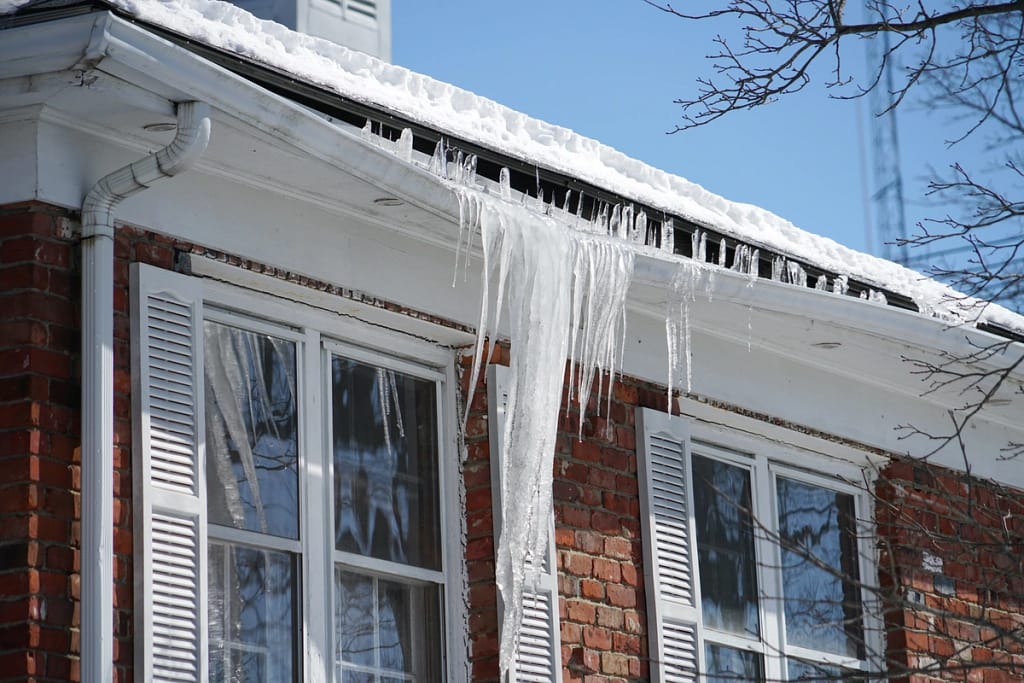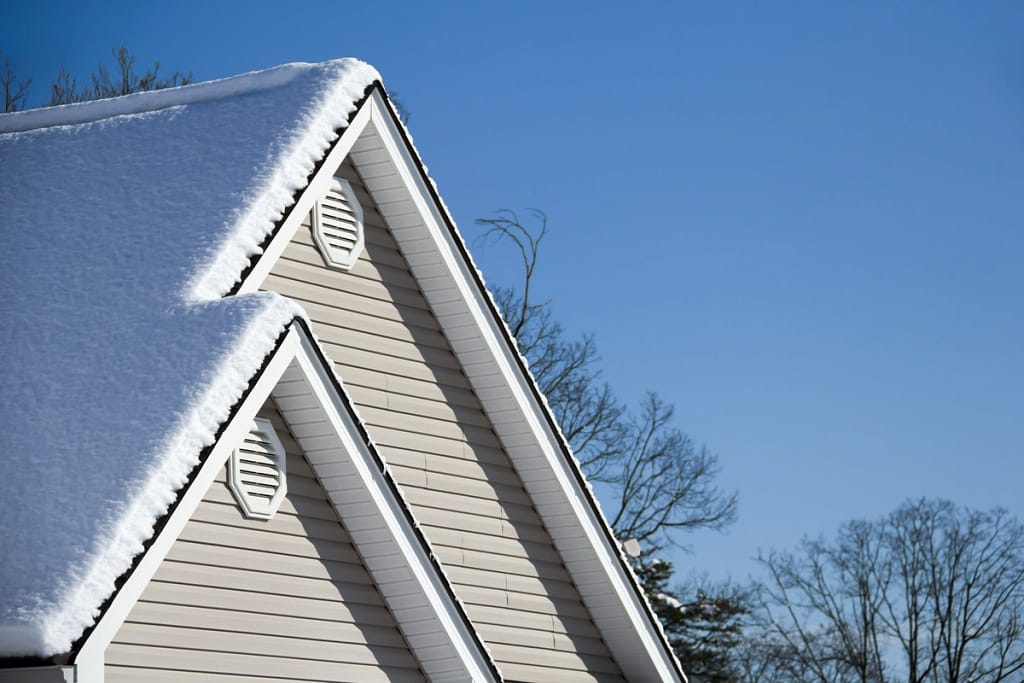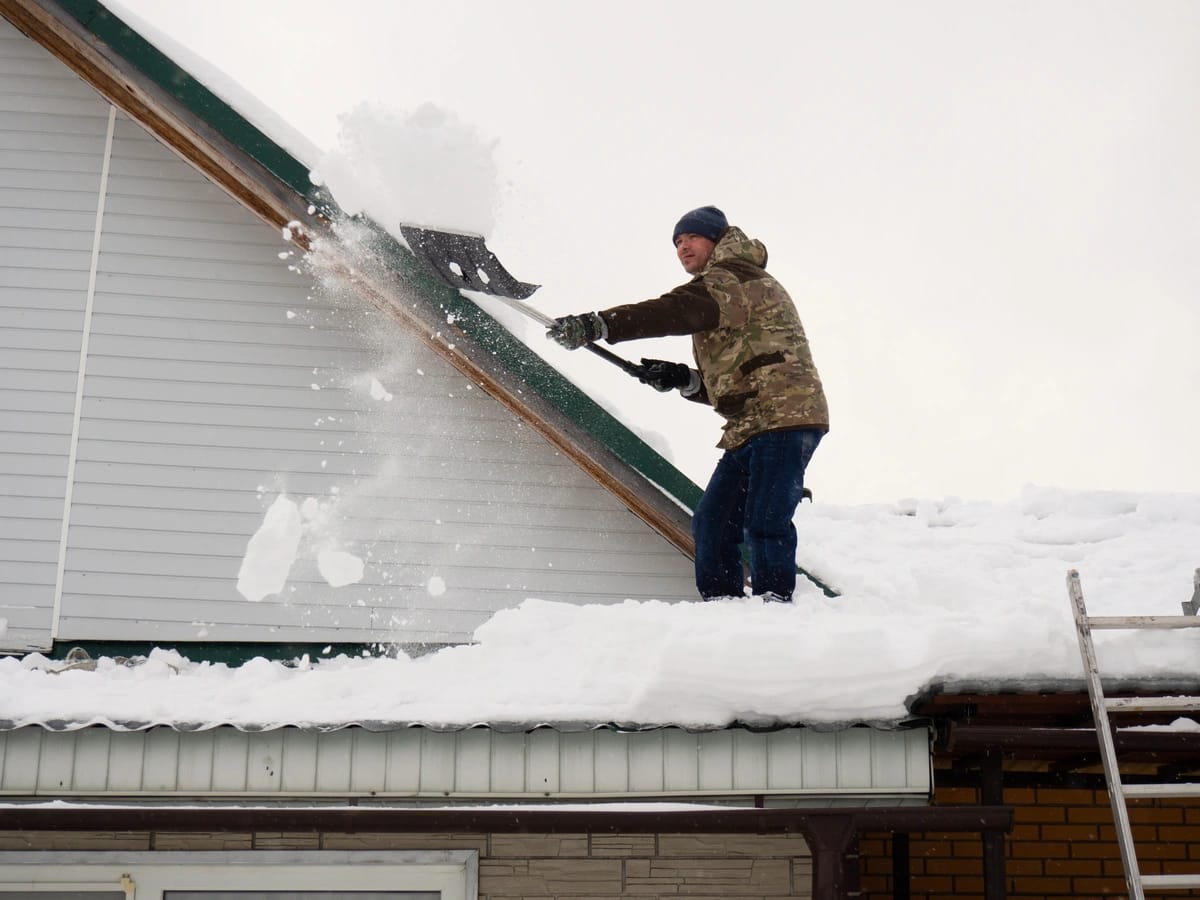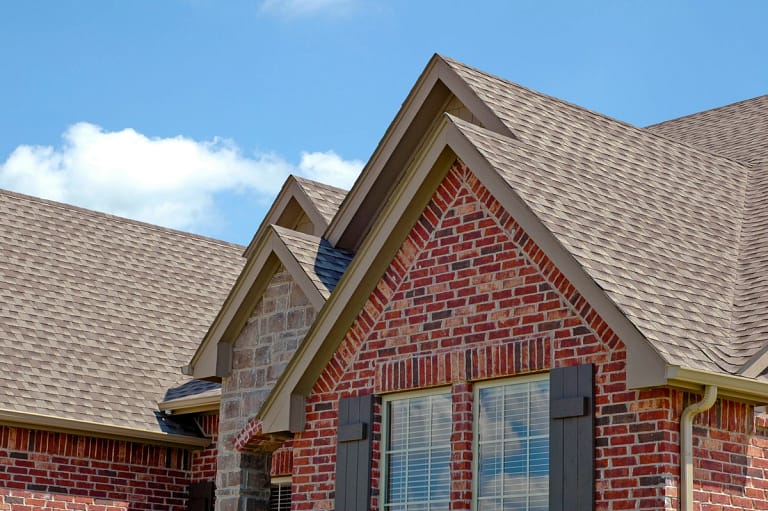Winter brings a picturesque blanket of snow to our homes, but it also brings a hidden danger – the weight of snow accumulating on your roof. While the glistening snow may look beautiful, the dangers of letting it pile up on your roof cannot be ignored.
In this blog post, we’ll explore:
- The potential risks of snow accumulation on your roof
- Tips on safe roof snow removal
- When to call a professional
- Valuable advice on protecting your roof during the winter season
The Dangers of Letting Snow Pile Up

Snow may not look all that dangerous, perched on your rooftop, but it can create serious damage, if not taken care of. Here are some of the risks:
- Roof Collapse: One of the most immediate and severe dangers of allowing snow to accumulate on your roof is the risk of a roof collapse. The weight of snow and ice can place immense stress on your roof’s structure, potentially leading to catastrophic damage. The exact amount of snow that can cause a roof to collapse varies depending on various factors like the type of snow, roof design, and building materials. However, it’s essential to address snow accumulation before it reaches dangerous levels.
- Ice Dams: Ice dams are another common issue caused by snow accumulation on your roof. These ice formations occur when snow on your roof melts, runs down to the eaves, and refreezes. Over time, this can lead to the formation of ice dams, which can cause water to back up under your shingles and into your home. This can result in roof leaks, water damage to your attic, and even structural problems.
- Gutter Damage: Excessive snow and ice can put a significant strain on your gutters and downspouts. When ice dams form, they can block the flow of water, causing it to overflow and damage your gutters. Additionally, the weight of snow and ice can pull gutters away from the roofline, leading to costly repairs.
- Health and Safety Risks: Allowing snow to accumulate on your roof also poses health and safety risks. Falling icicles and chunks of snow can be hazardous to people and pets below. Snow buildup can also create a slippery surface around your home, increasing the risk of accidents.
How to Safely Remove Snow from Your Roof: 4 Tips
Now that we understand the potential dangers of snow accumulation, let’s explore safe methods for removing snow from your roof:
1) Use a Roof Rake:
A roof rake is a long-handled tool designed specifically for removing snow from your roof while staying on the ground. Start from the edge of your roof and gently pull the snow down, being careful not to damage your shingles. Work in sections and move slowly to prevent sudden shifts in weight.
2) Remove Snow Strategically:
When using a roof rake, prioritize removing snow from areas where the risk of ice dam formation is highest, such as the eaves and valleys of your roof. It’s crucial to remove snow before it becomes too compacted or turns into ice, as this will make removal more challenging.
3) Be Cautious of Ice:
When removing snow, be mindful of any ice that may be present. Ice can be hidden beneath the snow and pose a risk to your safety. Use caution and consider using ice melt or a heated cable system to prevent ice buildup.
40 Work with a Partner:
Roof snow removal can be physically demanding and potentially dangerous. It’s advisable to have a partner on the ground to assist you and ensure your safety. They can also help keep the area clear of people and pets.
When to Use a Professional
While removing snow from your roof is a task that many homeowners can undertake themselves, there are circumstances where it’s best to enlist the help of a professional:
- Excessive Snow Accumulation: If you have a particularly heavy snowfall or if snow has been on your roof for an extended period, it’s safer to call a professional. They have the experience and equipment needed to handle large snow loads safely.
- Steep Roofs: Steep roofs are more challenging to work on and pose a higher risk of accidents. If your roof has a steep pitch, it’s wise to hire a professional who is trained to work on such surfaces.
- Roof Damage: If you suspect that your roof may already be damaged or weakened, attempting snow removal yourself can exacerbate the problem. In such cases, it’s essential to have a professional assess the situation and make the necessary repairs.
- Safety Concerns: If you’re uncomfortable with heights, have mobility issues, or are not confident in your ability to safely remove snow from your roof, it’s best to leave the task to professionals.
Ways to Protect Your Roof for Winter
Prevention is often the best approach when it comes to protecting your roof from the potential hazards of winter. Here are some steps you can take to safeguard your roof:
Insulate and Ventilate:
Proper insulation and ventilation in your attic can help regulate the temperature on your roof, preventing snow from melting and refreezing as ice dams. Ensure your attic is well-insulated and that vents are unobstructed.
Install a Heated Cable System:
Heated cable systems, also known as heat tapes, can be installed along the roof’s eaves and in valleys to prevent ice dam formation. These cables generate heat to melt snow and ice, allowing water to drain safely.
Trim Overhanging Branches:
Overhanging branches can deposit additional snow on your roof during a snowfall. Trim branches that could potentially contribute to snow accumulation or damage your roof during winter storms.
Clean Gutters and Downspouts:
Regularly clean your gutters and downspouts to ensure that water can flow freely. This will help prevent ice dam formation and gutter damage.
Conduct Roof Inspections:
Schedule regular roof inspections to identify any potential issues or damage before the winter season begins. Address any necessary repairs promptly to prevent further damage during winter weather.
Get Help With Your Rooftop Snow Removal

Roof snow removal is a critical task for homeowners in regions with harsh winter weather. The dangers of allowing snow to accumulate on your roof are real and should not be underestimated. By following safe removal methods, knowing when to call a professional, and taking steps to protect your roof for winter, you can keep your home safe and sound during the colder months. Remember, a little prevention and proactive maintenance can go a long way in safeguarding your investment and ensuring your family’s safety.
Whether you want to prevent ice dams, or come up with a strategy against falling snow, Best Exteriors can help. Contact us today to set up a consultation




